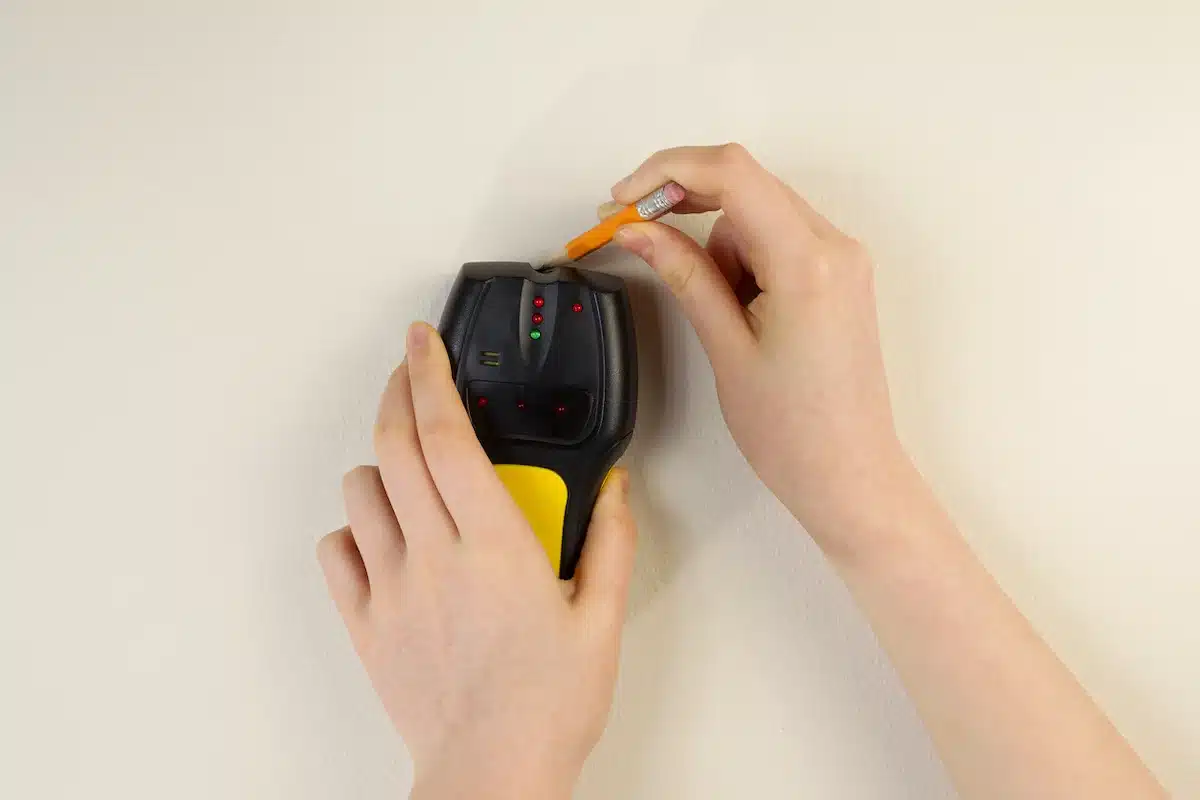Leather has long been a symbol of luxury, durability, and timeless style. However, growing concerns about animal welfare and the environmental impact of leather production have led to the rise of synthetic alternatives, one of which is PU leather. But what is PU leather?
Over time, consumers genuinely concerned about the ethical implications of leather production have significantly contributed to the increase in the demand for synthetic leather alternatives, such as PU leather.
In this article, we will delve into the world of PU leather, exploring its origins, properties, advantages, and disadvantages. We will also address common questions and misconceptions surrounding this versatile material, ensuring that you make informed choices when selecting products made from PU leather.
Table of contents
- What Is PU Leather?
- How Is PU Leather Produced?
- What Are The Different Types Of PU Leather?
- What Are The Advantages of PU Leather?
- What Are The Disadvantages of PU Leather?
- What Are The Applications of PU Leather?
- How To Identify PU Leather From Real Leather?
- Does PU Leather Crack Easily?
- How Long Can PU Leather Last?
- What Are The Environmental Considerations Of PU Leather?
- How Do I Mitigate Environmental Impacts?
- What Are Some Sustainable Alternatives To PU Leather?
- How Does PU Leather Compare To Real Leather In Terms Of Performance?
- Verdict: Is PU Leather Real or Fake?
- FAQs
- Conclusion
- References
- Recommendations
What Is PU Leather?
PU leather, also known as polyurethane leather or faux leather, is a synthetic material that mimics the appearance and texture of genuine leather. It is created by coating a base fabric, typically cotton or polyester, with a polyurethane resin. This resin undergoes various treatments to achieve the desired texture, color, and finish, resulting in a material that closely resembles real leather. PU leather can be made to look like a variety of different types of leather, including smooth leather, suede, and patent leather.
Read also: 20 Best Gifts for Law Students |
How Is PU Leather Produced?
The production of PU leather involves a multi-step process that transforms raw materials into a versatile synthetic material that mimics the appearance and texture of genuine leather. Here’s a breakdown of the key stages involved:
1. Preparation of Base Fabric
The process begins with the selection and preparation of a base fabric, typically cotton or polyester. This fabric serves as the foundation upon which the polyurethane coating will be applied. The fabric is thoroughly cleaned and treated to ensure proper adhesion with the polyurethane resin.
2. Polyurethane Coating
The polyurethane resin, the primary component of PU leather, is prepared by mixing various chemicals and additives. The specific formulation varies depending on the desired properties of the PU leather, such as flexibility, durability, and water resistance.
3. Coating Application
The polyurethane resin is applied to the prepared base fabric using various techniques, such as calendaring, dipping, or spraying. The coating thickness can be controlled to achieve the desired thickness and appearance of the PU leather.
4. Drying and Curing
After the polyurethane coating is applied, the fabric undergoes a drying and curing process. This involves raising the temperature to allow the polyurethane resin to solidify and crosslink, forming a durable and stable polymer network.
5. Finishing
Once the polyurethane coating has fully cured, the fabric is subjected to various finishing treatments to enhance its appearance and properties. This may include embossing to create a leather-like grain pattern, applying a protective topcoat for water resistance, and adding pigments or dyes to achieve the desired color.
6. Final Inspection and Packaging
The finished PU leather is subjected to a final inspection to ensure it meets all quality standards. Once approved, it is rolled or packed in rolls or sheets according to customer specifications.
What Are The Different Types Of PU Leather?
PU leather, also known as polyurethane leather or faux leather, is a versatile synthetic material that mimics the appearance and texture of genuine leather. It is widely used in various applications, including fashion, footwear, upholstery, and automotive interiors. There are several types of PU leather available, each with its unique characteristics and applications:
1. Split PU Leather

Split PU leather is made from the split layer of real leather, which is then coated with polyurethane. This type of PU leather offers a more durable and leather-like appearance compared to other PU leather types. It is often used in products that require a higher level of durability, such as handbags, wallets, and belts.
2. Full-grain PU Leather

Full-grain PU leather resembles the texture of genuine full-grain leather, with its natural grain and imperfections. It is often used in high-end products that seek to replicate the look and feel of real leather. Full-grain PU leather can be treated to achieve various finishes, such as distressed or antique looks.
3. Bi-cast PU Leather

Bi-cast PU leather is made by applying two layers of polyurethane, creating a thicker and more durable material. It is often used in products that require extra strength, such as upholstery and footwear. Bi-cast PU leather can be embossed with various textures to mimic different types of leather, such as crocodile or snakeskin.
4. Nubuck PU Leather

Nubuck PU leather is a soft, velvety type of PU leather that resembles nubuck leather, which is the top layer of cowhide with its natural grain removed. It is often used in shoes, jackets, and accessories for its luxurious feel and appearance.
5. Microfiber PU Leather

Microfiber PU leather is a high-quality type of PU leather made from extremely fine fibers, resulting in a soft, smooth, and breathable material. It is often used in high-end products that demand superior comfort and durability, such as car interiors and luxury handbags.
6. Patent PU Leather

Patent PU leather is a type of PU leather with a glossy, shiny finish. It is often used in fashion accessories, such as shoes, handbags, and belts, to add a touch of elegance and sophistication. Patent PU leather can be made from various types of PU leather bases, such as split PU or full-grain PU.
See also: How To Crack Your Back Tiktok
What Are The Advantages of PU Leather?
PU leather has several advantages over real leather:
Affordability: PU leather is typically more affordable than real leather, making it a more accessible option for many consumers.
Water resistance: PU leather is more water-resistant than real leather, making it a better choice for products that may be exposed to moisture, such as handbags, shoes, and jackets.
Ease of care: PU leather is easier to care for than real leather, as it does not require regular conditioning or polishing.
Animal-friendly: PU leather is a vegan material, as it does not involve the use of animal products.
What Are The Disadvantages of PU Leather?
PU leather also has some disadvantages:
Breathability: PU leather is less breathable than real leather, which can make it uncomfortable to wear in hot weather.
Appearance: PU leather may not have the same natural look and feel as real leather.
Sustainability: PU leather is a synthetic material, and its production can have environmental impacts.
What Are The Applications of PU Leather?
Due to its versatile nature and numerous advantages, PU leather finds applications across diverse industries and product categories. Here’s a comprehensive overview of the applications of PU leather:
Fashion
PU leather is extensively used in the fashion industry, particularly in the production of footwear, apparel, and accessories. Its durability, affordability, and wide range of textures and finishes make it an ideal substitute for genuine leather. Common fashion items made from PU leather include:
- Shoes: PU leather is widely used in shoes, including sneakers, boots, sandals, and dress shoes. It offers a stylish and durable option for footwear, especially in areas prone to wear and tear.
- Apparel: PU leather jackets, pants, skirts, and dresses are popular choices due to their sleek appearance and easy maintenance. PU leather garments provide a fashionable and affordable alternative to real leather clothing.
- Accessories: Handbags, wallets, belts, and other accessories often incorporate PU leather for its durability, water resistance, and ability to mimic various leather textures.
Furniture Upholstery
PU leather is a popular choice for furniture upholstery due to its durability, ease of cleaning, and wide range of colors and textures. It is commonly used in couches, chairs, sofas, and other upholstered furniture. PU leather upholstery offers a stylish and practical option for homes and commercial spaces.
Automotive Interiors
PU leather is extensively used in automotive interiors, particularly in dashboards, seat covers, door panels, and armrests. Its durability, water resistance, and ability to mimic various leather textures make it an ideal material for car interiors. PU leather enhances the vehicle’s interior aesthetics and provides a comfortable and luxurious driving experience.
Other Applications
PU leather’s versatility extends beyond fashion, furniture, and automotive interiors. It finds applications in various other fields, including:
- Luggage and Travel Goods: PU leather is commonly used in suitcases, backpacks, wallets, and other travel accessories due to its durability, water resistance, and lightweight nature.
- Book Covers: PU leather is used in book covers, providing a durable and attractive protection for books and journals.
- Sports Equipment: PU leather is used in various sports equipment, such as baseball gloves, basketballs, and martial arts sparring gear.
- Home Décor: PU leather accents, such as throw pillows, coasters, and table runners, add a touch of elegance and sophistication to home décor.
Read also: How To Become A Voice Actor In 2023: Schools, Salary, Cost, Requirements
How To Identify PU Leather From Real Leather?
Differentiating between PU leather and real leather can be challenging, especially at first glance. However, there are a few subtle clues that can help:
Texture: Real leather has a natural, irregular texture with visible pores and grain patterns, while PU leather often feels more uniform and plastic-like. Real leather may have slight imperfections or blemishes, while PU leather tends to have a smooth, flawless appearance.
Smell: Real leather has a distinctive earthy or animalistic smell, often described as a “leather” odor. PU leather, on the other hand, may have a chemical or synthetic odor, sometimes resembling plastic or vinyl.
Edge finish: The edges of real leather are often rough and unfinished, with visible fibers and irregularities. PU leather edges are typically smooth and sealed, with a uniform finish.
Water test: A drop of water absorbed quickly into PU leather indicates synthetic material, while real leather will repel the water or absorb it slowly. This is because real leather has natural oils and fibers that resist water penetration.
Burn test: This method is not recommended for valuable items as it can cause damage. However, if you have a small scrap of material, a burn test can provide some insight. Real leather will char and emit a burnt hair smell, while PU leather will melt and emit a chemical odor.
Flexibility: Real leather is naturally flexible and will bend easily without cracking. PU leather may feel stiffer and more rigid, and excessive bending can cause it to crack or peel.
Price: Real leather is typically more expensive than PU leather, especially for higher-quality grades. If a product seems too inexpensive to be genuine leather, it is likely PU leather or a blend of PU and real leather.
Does PU Leather Crack Easily?
PU leather is susceptible to cracking, especially if it is of low quality or not properly cared for. Factors that can contribute to PU leather cracking include:
Excessive bending or flexing: Repeated bending or flexing can strain the polyurethane coating, causing it to crack over time. This is more common in areas that experience frequent movement, such as the folds of a handbag or the creases in shoes.
Exposure to heat or sunlight: Extreme temperatures can cause the polyurethane coating to become brittle and crack. Prolonged exposure to sunlight can also degrade the material and make it more susceptible to cracking.
Contact with harsh chemicals or solvents: Harsh chemicals, such as cleaning agents or solvents, can break down the polyurethane coating, leading to cracking and peeling.
Improper cleaning or conditioning: Using harsh cleaning methods or neglecting to condition PU leather can dry out the material, making it more prone to cracking.
To prevent PU leather from cracking, it is important to handle it with care, avoid exposing it to extreme conditions, and clean and condition it regularly according to the manufacturer’s instructions.
How Long Can PU Leather Last?
The lifespan of PU leather depends on various factors, including the quality of the material, usage, and care. Generally, However, on average, PU leather can last anywhere from 1 to 5 years. It is not as durable as real leather and may crack or peel over time, especially if exposed to harsh conditions like excessive sunlight or extreme temperatures.
What Are The Environmental Considerations Of PU Leather?
Evaluating the environmental considerations of PU leather involves assessing its impact on the environment throughout its life cycle, including production, use, and disposal.
PU Leather Production
The production of PU leather involves several steps that can have environmental consequences:
Raw Material Extraction: The production of polyurethane, the main component of PU leather, requires the extraction of petroleum-based resources, which contributes to greenhouse gas emissions and environmental degradation.
Chemical Synthesis: The synthesis of polyurethane involves the use of various chemicals, some of which may be hazardous to human health and the environment.
Energy Consumption: The production process consumes energy, often from fossil fuels, contributing to greenhouse gas emissions and air pollution.
PU Leather Use
PU leather, like any material, has environmental impacts during its use phase:
Water Resistance: PU leather is often treated with water-resistant coatings, some of which may contain fluorinated chemicals (PFCs), which are persistent environmental pollutants.
Leaching of Chemicals: Some PU leather products may release harmful chemicals, such as phthalates, during use, especially when exposed to heat or sweat.
Microplastics: PU leather, like other synthetic materials, can shed microplastics during use, contributing to microplastic pollution in the environment.
PU Leather Disposal
PU leather, being a synthetic material, is not biodegradable and can persist in the environment for hundreds of years if not disposed of properly. Landfilling of PU leather contributes to landfill waste and may release harmful chemicals into the environment.
Read also: 10 Best Tools for Dad in 2023 | Best Tools
How Do I Mitigate Environmental Impacts?
To minimize the environmental impact of PU leather, consider these strategies:
Choose Sustainable PU Leather: Opt for PU leather produced using environmentally friendly practices, such as those that reduce energy consumption, minimize chemical use, and prioritize sustainable raw materials.
Proper Care and Maintenance: Extend the lifespan of PU leather products by following proper care and maintenance instructions to reduce the need for replacements and minimize the environmental impact of production.
Responsible Disposal: When PU leather products reach the end of their useful life, dispose of them responsibly through recycling or waste-to-energy programs to avoid landfilling and environmental contamination.
What Are Some Sustainable Alternatives To PU Leather?
Sustainable alternatives to PU leather offer a more eco-friendly approach to fashion and accessories, minimizing the environmental impact of material production and reducing our reliance on synthetic materials. Here are some of the most promising sustainable alternatives to PU leather:
Plant-based Leather
Plant-based leather is a broad term encompassing a range of materials derived from renewable plant sources, offering a sustainable and cruelty-free alternative to animal leather. Some notable examples include:
- Piñatex: Made from pineapple leaf fibers, Piñatex is a durable, breathable, and water-resistant leather alternative. Its production utilizes waste pineapple leaves, reducing reliance on landfills and promoting circular economy principles.
- Mushroom Leather: Derived from mycelium, the root-like structure of mushrooms, mushroom leather is a versatile and sustainable material. It offers a soft, leather-like texture and is biodegradable, breaking down naturally without harming the environment.
- Apple Leather: Apple Leather, also known as Appleskin, is made from the waste peels and cores of apples left over from juice production. It is a sustainable alternative to animal leather, utilizing food waste and reducing environmental impact.
- Cactus Leather: Cactus leather is produced from the mature leaves of the cactus plant, offering a durable, water-resistant, and breathable material. Its production promotes sustainable land management practices and reduces the need for animal leather.
- Cork Leather: Cork leather is made from the bark of cork trees, which are harvested without harming the trees. It is a lightweight, durable, and water-resistant material that is also naturally fire-resistant.
Recycled Leather
Recycled leather utilizes post-consumer and industrial leather waste, transforming discarded materials into new products. This approach reduces the environmental impact of leather production by minimizing waste and extending the lifespan of existing leather.
- Post-industrial Leather: Post-industrial leather is derived from leather scraps and trimmings left over from the manufacturing process of new leather products. It is often used to create smaller items like wallets, belts, and accessories.
- Post-consumer Leather: Post-consumer leather is sourced from discarded leather goods, such as old furniture, clothing, or car upholstery. It is carefully processed and transformed into new products, reducing the amount of leather ending up in landfills.
Upcycled Leather
Upcycling leather involves repurposing and transforming discarded leather items into new products, giving them a new lease on life. This approach extends the lifespan of leather, reduces waste, and promotes creativity and resourcefulness.
- Repurposed Leather: Repurposed leather involves transforming discarded leather garments or accessories into new products with different designs or functions. This approach adds value to discarded items and reduces the demand for new leather production.
- Reconstructed Leather: Reconstructed leather involves carefully assembling and repairing damaged or discarded leather pieces to create new products. This approach utilizes leather that would otherwise be discarded and reduces the need for new leather production.
How Does PU Leather Compare To Real Leather In Terms Of Performance?
PU leather and real leather have distinct performance characteristics. Here’s a comparison:
| Feature | PU Leather | Real Leather |
| Durability | Less durable, may crack or peel over time | More durable, can last for decades |
| Breathability | Less breathable | More breathable |
| Water resistance | More water-resistant | Varies depending on the type of leather |
| Care | Easier to care for | Requires more care, especially for certain types of leather |
| Cost | Typically more affordable | Typically more expensive |
Verdict: Is PU Leather Real or Fake?
PU leather is not real leather. It is a synthetic material that imitates the look and feel of genuine leather. While it can be a convincing substitute, it is not the same as animal-derived leather in terms of its composition, durability, and breathability.
See also: How To Remove Creases From Shoes
FAQs
PU leather is generally considered to be more eco-friendly than real leather due to its lower environmental impact. Real leather production requires animal agriculture, which contributes to greenhouse gas emissions and deforestation. PU leather, on the other hand, does not require animal products and has a smaller carbon footprint.
PU leather is generally less breathable than real leather. This is because the polyurethane coating can restrict airflow. However, some high-quality PU leather products are designed to be more breathable by incorporating perforations or using specialized materials.
The best way to clean PU leather depends on the specific product and the type of stain. In general, it is recommended to use a mild soap and water solution to wipe down the surface. Avoid using harsh chemicals or abrasive cleaners, as these can damage the material.
Regular conditioning helps to keep PU leather supple and prevent cracking. Use a specialized PU leather conditioner or a mild leather conditioner as directed by the manufacturer.
PU leather is considered a vegan material as it does not involve the use of animal products.
Conclusion
PU leather has emerged as a popular alternative to real leather, offering a combination of affordability, animal-friendliness, and ease of care. While it may not be as durable or breathable as genuine leather, PU leather can provide a stylish and functional solution for various applications. By understanding the properties, advantages, and limitations of PU leather, you can make informed decisions when selecting products made from this versatile material.
References
- eikenshop.com – What is PU Leather? The Secrets of an Alternative to Real Leather
- home.howstuffworks.com – What Is PU Leather, and Is It Better Than the Real Thing?





